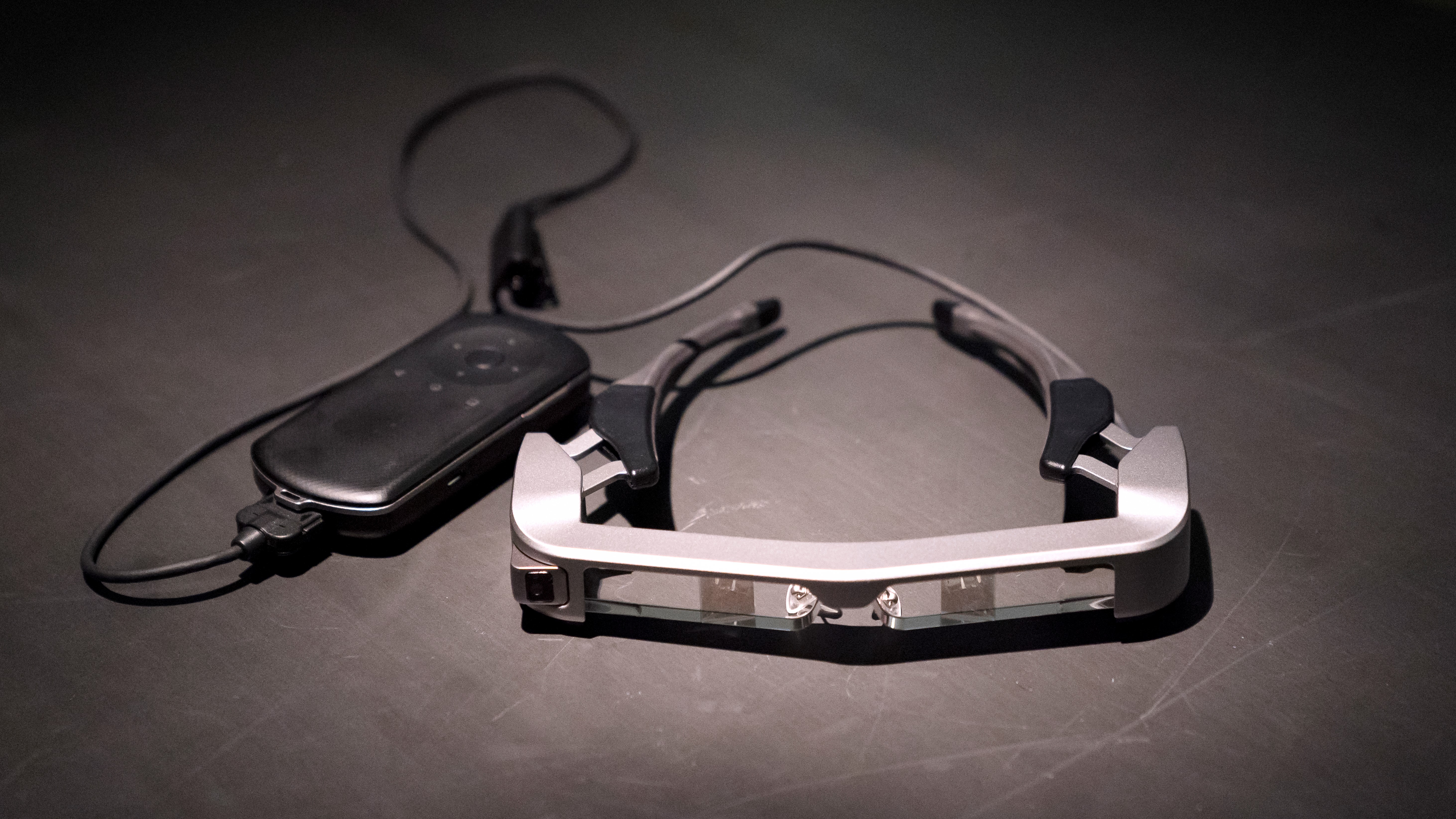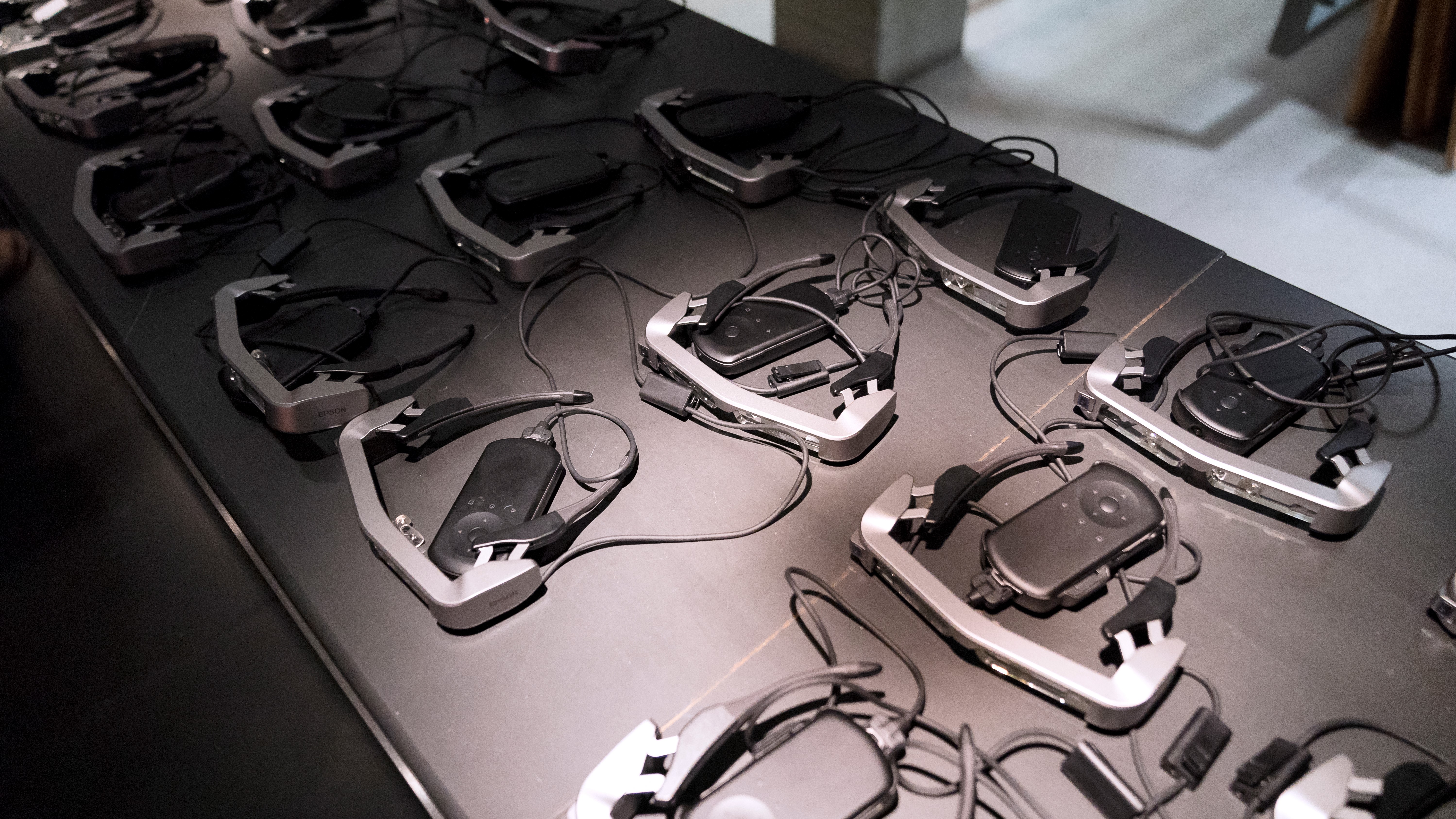Smart glasses never quite lived up to their initial hype. When the likes of Epson Moverio and Google Glass were released a few years ago, the idea of an augmented reality overlay built into your glasses, projecting words, images and information on the environment around you captured our imaginations.
But the ambitious technology had little to offer the average consumer, while the functional designs of AR-ready glasses are yet to be seen strutting down any catwalks. Even the curves of the more stylish Snapchat Spectacles, which come with a built-in video camera to capture social media fodder, have yet to take off in the way many had thought they would.
Still, there are plenty of manufacturers looking to put the potential of smart glasses to new and innovative uses. Last year we reported on plans by the UK’s National Theatre to use the Epson Moverio BT-350 glasses in a more arts-focused setting, as part of an initiative to improved accessibility – and those plans have finally come to fruition.
Accessible theater is long overdue
Live performances throw up all sorts of difficulties for hard-of-hearing audience members. Unlike when you're watching your television set at home, you can’t switch on subtitles at the touch of a button, you have no control over the volume, and dialogue can be easily lost over the chatter and laughter of the audience around you.
There are an estimated 11 million people in the UK alone affected by some degree of hearing loss (roughly one in six citizens), with that number only expected to grow.

Most entertainment venues with an accessibility scheme – if they have one – rely on occasional captioned performances or visiting BSL (British Sign Language) translator, which can become a lottery of inconsistent scheduling for those whom theaters are hoping to draw in.
The National Theatre hopes to combat this with the Epson Moverio BT-350, a rather robotic set of smart specs that conjure a text overlay to describe the dialogue and sound effects happening onstage. We first reviewed Epson’s Moverio BT-100 specs, which were intended more as an entertainment device in their own right than a supplementary hearing aid, back in 2011, but it’s clear the design and purpose of the smart glasses has come a long way since then.
We attended a short extract of Ionesco’s tragicomedy Exit The King at the London theater while wearing the BT-350s – or Smart Caption Glasses as the National calls them – and were able to read our own personal subtitles throughout the performance, moving our head to let the words roam wherever we happened to look, whether it was snappy chatter between the actors or stage directions informing us of a ‘low rumble’ or ‘Marie, wailing’.
And we mean ‘personal’: each pair comes with a built-in menu pane you can access throughout a show, allowing users to pick their favored text size, color, and placement on the display (we found just above the actors' heads the ideal position). Audience members hold a small trackpad that works like a standard PC cursor, and can also call for assistance or play a short user tutorial from the menu.
Talking smarts
Epson and the National Theatre worked in tandem with Accenture to develop a dedicated speech-to-text transcription system, meaning the subtitles are actually transcribed in real time from the actors’ performances before being matched to the correct line of dialogue in the script, which is then sent through to each user’s Moverio glasses.

There was only one point where the wrong line was summoned up for us – an unavoidable issue when actors are prone to occasionally reshuffling their lines in live shows. Otherwise, it proved a fluid experience, and a novel way to track the action without having to look to the side of the stage for captions, bringing to mind an 'massive multiplayer online' video game in which character names or stats float above avatars’ heads.
Unlike Google Glass, the Moverio BT-350 has two displays instead of one, showing an image to each eye that viewers then combine into one. It adds a certain sense of realism and depth perception – as much as ‘floating words’ can manage – although it somewhat ironically requires the equivalent of 20:20 vision to work perfectly.
We had to take off our own glasses to use them, and were stuck with a doubled-up line of text that wouldn’t quite align. But those of you wearing contacts – or those of you lucky enough to have perfect vision – should be fine.
Anyone can call in advance of the show to claim a pair of the glasses, with no need for official documentation – though the National Theatre hopes to offer more of a ‘walk-in’ service in the future.
The start of something
We spoke with a representative from Graeae Theatre Company – the world’s oldest dedicated theater company for supporting D/deaf and disabled artists – who called the smart glasses a “fantastic initiative”, and a “huge step for access in theater. We look forward to seeing how this and similar technology are developed further“.
While the Epson Moverio BT-350 glasses are still limited in their scope and ability, they're far beyond the sort of accessibility measures offered to the UK’s wider arts audience. This certainly seems like a step in the right direction for venues, and could help fuel the resurgence of AR displays and wearables – if, as in this case, manufacturers can figure out genuinely useful applications for the technology.
Smart Caption Glasses are currently available for all performances of Hadestown and War Horse from the National Theatre website, and will be implemented for all new season performances and various NT tours going forward.
source http://www.techradar.com/news/ar-meets-accessibility-how-epsons-smart-glasses-found-a-home-in-the-theater
No comments:
Post a Comment